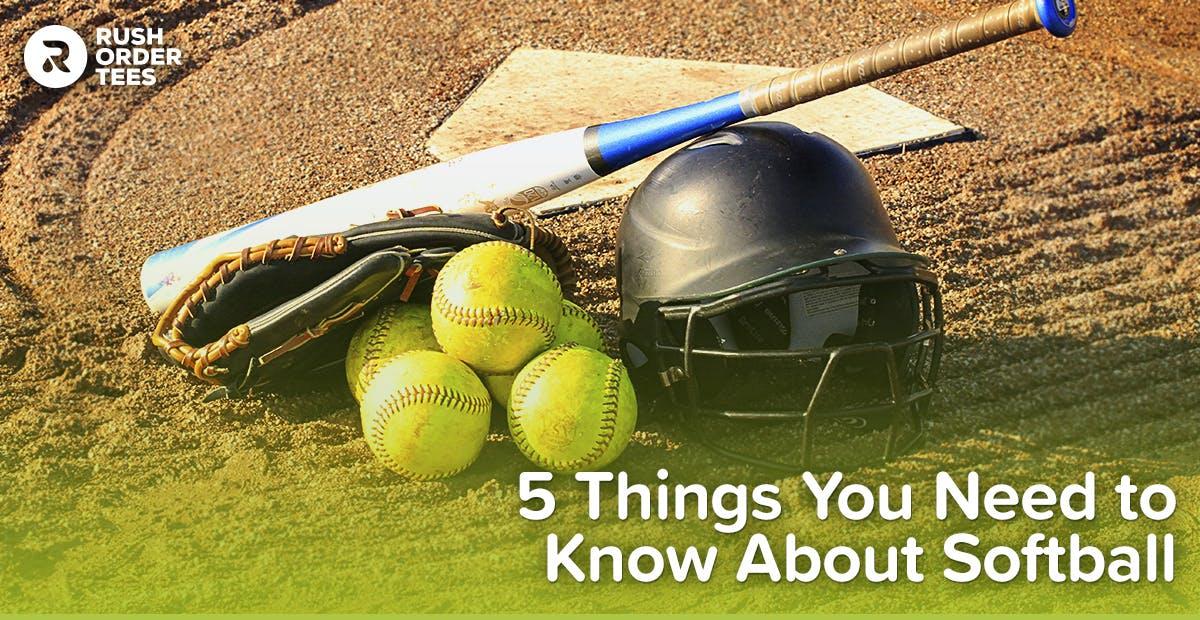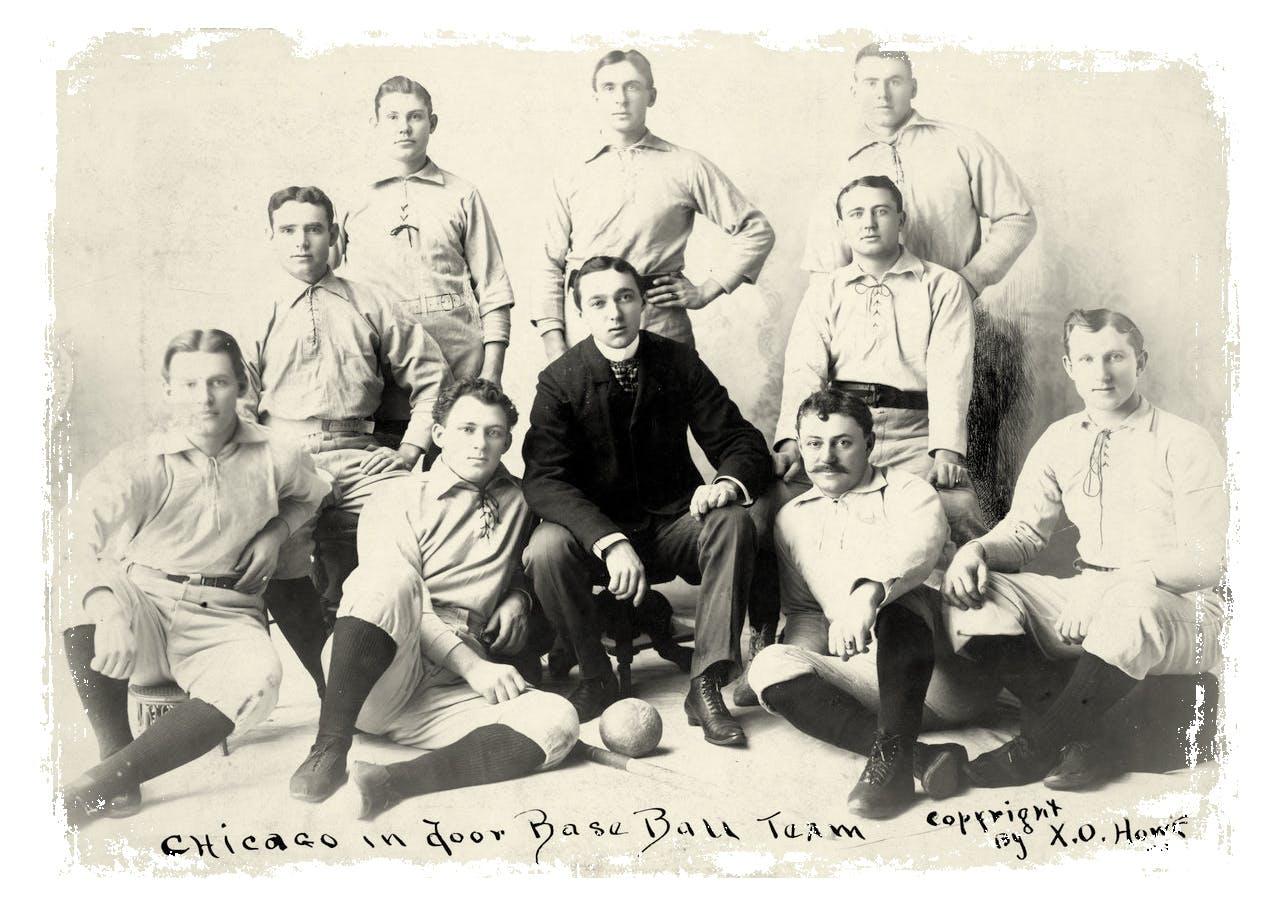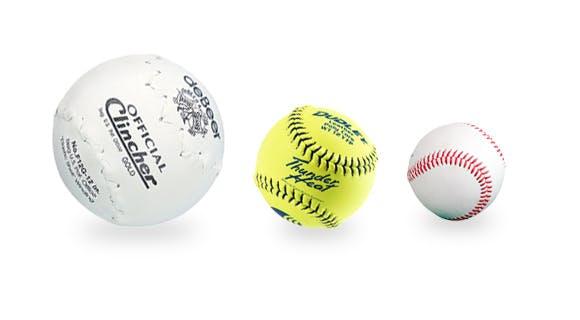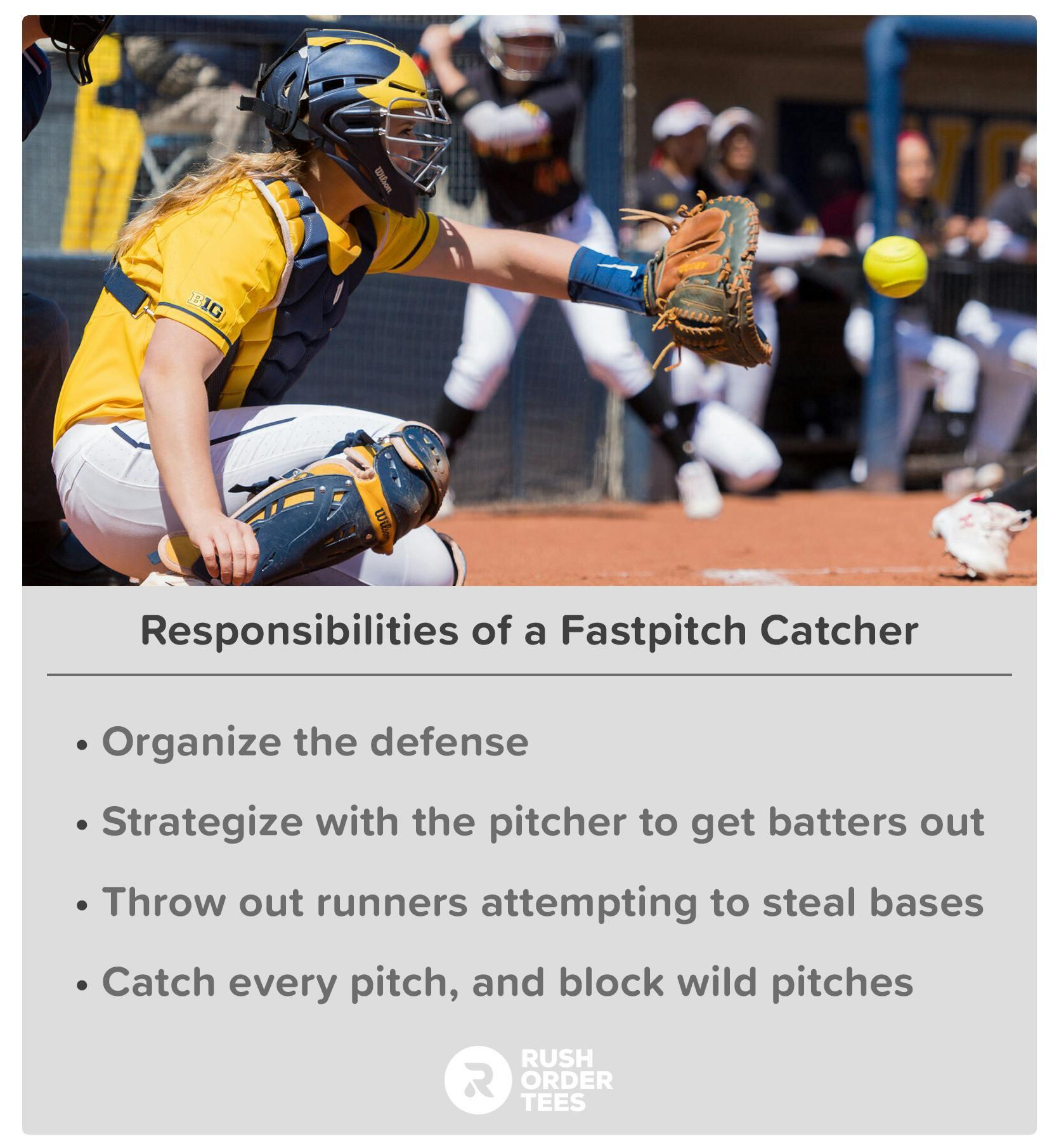

Everyone from kids to senior citizens can enjoy softball. And there’s really never a bad time to introduce yourself to the game. Still, first-timers (and their parents) might want to get acclimated to the game before their first practice. Before you have your first catch, get to know these essential things about the game of softball.
1. It isn’t “just like baseball.”
Yes, the game is played on a 4-base diamond. Three strikes and you’re out, four balls and you get to walk to first base. Players on each team have assigned positions. The team up to bat has to follow the batting order set by each team’s manager at the beginning of the game.
But that’s about where the similarities end.
Softball is played on a smaller field, with 60-foot basepaths (the path that runners use to get to each base. The smaller dimensions make for a faster-paced, arguably more exciting game, in part because it enables techniques like slap hitting:
Unlike baseball, there’s no pitcher’s mound in softball. Instead, the pitcher stands inside of a flat “pitcher’s circle” with a “rubber” in its center. The distance from the rubber to home plate is 43 feet, as compared to the 60 feet, 6 inch distance of professional baseball.
While baseball pitchers tend to throw with more raw power and speed, the combination of the shorter distance between the pitcher and home plate in softball poses its own
There are a few other distinct details that separates softball from baseball. Pitchers throw underhand, as opposed to the overhand pitching found in baseball. Baserunners in softball aren’t allowed to take a lead off the base prior to the ball leaving the pitcher’s hand.
2. The ball isn’t actually soft.
At least, it isn’t in the modern version of the game. Softball was invented by a group of men in Chicago in 1887 as an indoor alternative to playing baseball outside in the Illinois winter. Legend has it the first ball was fashioned out of a boxing glove, making it soft and unable to travel far. It was also fielded barehanded.

As the game progressed, the balls got progressively harder. Still, a softball is bigger than a baseball because the larger circumference ensures it won’t travel as far as a baseball, making it ideal for playing in smaller (or even indoor) spaces.
The current standard for a softball is 12 inches in circumference, with a figure eight stitching pattern. And it is hard. Like, break your fingers hard. Unless you’re playing by Chicago rules (which uses a 16-inch ball anyway), you’re going to need a glove.

The Best Type of Softball Glove for Beginners
–Made of soft or easily broken in leather. There’s no need to shell out over 00 for an entry-level glove. Just make sure the player can squeeze it shut, and a softball won’t pop out.
-Neither too big nor too small. The glove should fit a player’s hand should fit snugly, but not uncomfortably so. A player should be able to control the glove, but have enough length to make catches more easily.
–NOT a baseball glove. A baseball glove will work in a pinch, but they don’t have a big enough pocket to stand up to long-term softball use. A softball specific glove is built for the purpose of catching a softball– not a baseball.
3. There Are Two Versions of Softball: Slowpitch and Fastpitch
There are two main codes of softball rules: slow pitch and fastpitch. The main difference is in the name: slow pitch requires pitchers to pitch a slow, looping ball to the batter, while fastpitch has pitchers windmill the ball underhand to the plate as hard as they can.
For this reason, slow pitch is generally regarded as the better version for beginners, and those who want to play a more leisurely game.
That’s not to say there are no competitive slow pitch softball tournaments, just that the game is more accommodating to those who may not have the time to dedicate to hardcore training.
Fastpitch, on the other hand, is a more taxing game that requires quick reflexes and a serious competitive streakThis is the version of the game that’s played at the highest level. It was supposed to return to the Summer Olympics (along with baseball) this year.
There are a few other interesting distinctions between the two sets of rules. Slow pitch teams are typically able to play with 10 players in the field, while fastpitch only allows for nine. The extra player in slow pitch can play “short outfield” (aka “rover”), behind second base at the edge of the infield (called a “pivot”), or as a fourth outfielder.
Team Size
How many players per team depends on the league. Recreational slow pitch leagues may require a lower maximum amount of players in order to ensure everyone gets enough playing time, while fastpitch leagues may have a higher limit to help teams play in the event of injuries.
The Role of the Catcher
Catchers are not always required to wear protective gear in slow pitch games, especially for adult recreational leagues. They are generally not too involved in the defensive part of the game, which is why some teams will put their weakest defender, or someone coming back from an injury, there.
By contrast, the catcher is one of the most involved players in fastpitch softball. They are required to position the defense to best cover the player at-bat, communicate with the pitcher about what type of pitch to throw, and throw out runners attempting to steal bases. They also have to wear extensive protective gear that allows them to stay safe from foul-tips and balls that bounce in the dirt, along with a glove that can protect their hand from the speed of the pitch.

Game Length
While a slow pitch softball game can have anywhere from three to seven innings per game, fastpitch softball requires seven. Both have rules allowing for extra innings in the event of a tie.
Because a game is measured by innings and not a clock, it can be hard to say how long games last, time-wise. Generally, seven inning games can last in upwards of two hours, while slow pitch games are slightly more likely to be shorter, as leagues have leeway within the rules to limit how many runs a team can score per inning.
4. Softball Favors All-Around Athleticism
Slow pitch adult softball often gets the “beer league” moniker that makes it seem like little more than a glorified barbecue, but don’t be fooled– you’ll use every muscle group. Softball can be fun, but it isn’t necessarily “easy” to play
Every player needs to know how to throw, catch, swing the bat, and field ground balls. They also need to have the mental and physical stamina to stand in the field, ready for the ball to be hit to them (harder than it looks!).
While you might not need to get in the best shape of your life to play, you will need to round yourself into something approaching playing shape.
Basic Activities to Prepare for a New Season
– Jogging and running to build endurance.
to build arm strength and endurance.
at your local batting cage to refine your hitting approach.
– Practice running the bases to familiarize yourself with the best path around the bags.
5. You’re going to get dirty
Softball is played on a dirt diamond and a grass outfield. Not exactly the place to wear your Sunday best.
You don’t want to look like The Rookie, either, so it’s definitely a good idea to pick up some athleticwear and softball-specific clothing to wear to practice or games.
I’m including games in this because not every softball league offers full-on uniforms for players. Many rec leagues will give you just a t-shirt to wear to games. Some shoestring operations won’t even offer that much. If you’re running a team or league and want to make awesome uniforms for the diamond, check out our guide to designing baseball uniforms. They may be two different sports, but most of the same principles apply.
Many rec leaguers prefer playing in shorts. After all, you’re usually playing in the sun, and keeping cool is better than feeling cooked. But it makes sliding a risky proposition. If you’re playing casually, you may think you don’t need to slide. But if you’re like me, sometimes the heat of the moment takes over and you end up with a scrape down your backside.
with that in mind, you should buy a pair of sliding shorts to go under your gym shorts. It will offer a little extra protection when you make that extra effort.
Softball or baseball pants are another good option. Yes, you will feel a bit warmer in them, but you’ll also have an extra bit of defense from scrapes should you fall down, or make a diving catch in the gap. They’re pretty durable, too.
Pick up a pair of cleats, too. They offer superior traction to sneakers when running on the field. This will help prevent injuries, both to yourself and others.
Don’t forget about protecting your eyes (and skin) from the sun. Sunscreen should be a given at the very minimum. Wear sunglasses– otherwise, what will you do when someone hits a pop fly? A hat or visor is a classic softball look. If you’re in a casual adult league, however, there’s probably no need to adhere to tradition. What I’m saying is, if you feel like wearing a bucket cap, you totally should.
If you’re a newcomer to the game of softball, I hope you enjoy getting to know the game better. There are so many details and nuances that make it infinitely interesting. These basics are your gateway to a whole lot of fun!

About the Author
Kyle Greco is the resident writer at RushOrderTees, where he blends word nerdery with his love for T-shirts. A graduate of The College of New Jersey, he is interested in exploring the intersection of clothing and culture. In his spare time, he makes music, builds guitars, and cooks with his wife. He enjoys hot dogs, sports, and collecting too many hats.
